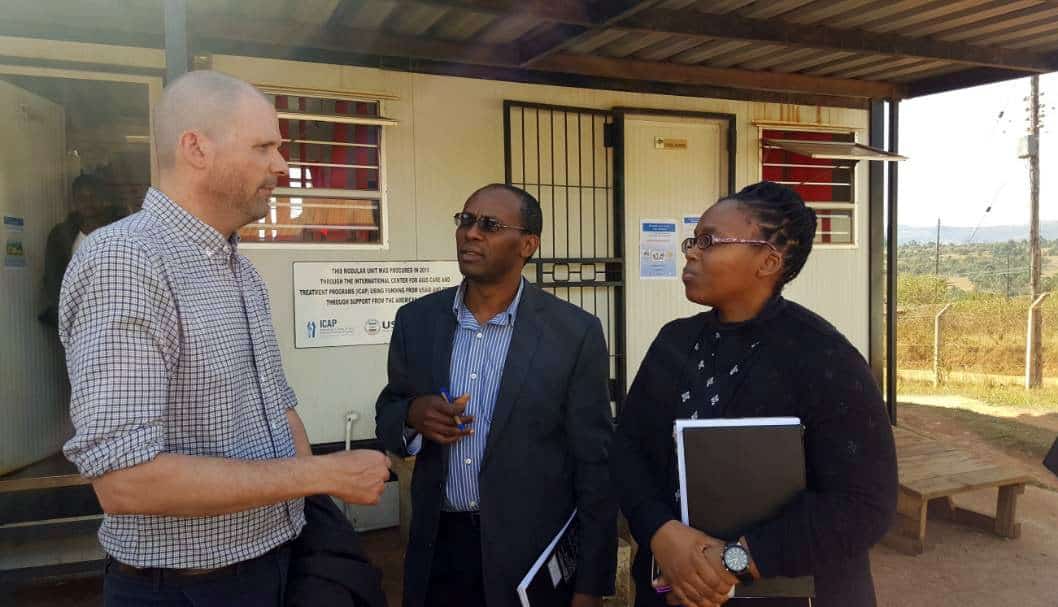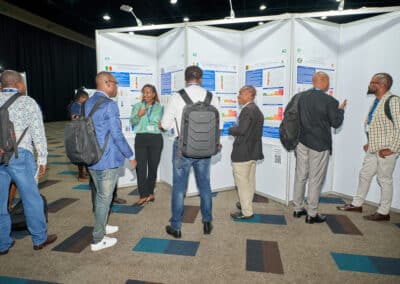New York, NY – Although Swaziland has the highest prevalence of HIV in the world, its National AIDS Program (SNAP) has made significant progress towards epidemic control by scaling up HIV prevention and treatment services. By 2015, nearly 70 percent of people living with HIV had access to antiretroviral therapy (ART). In order to further expand coverage and quality, SNAP updated its national treatment guidelines to include innovative community-centered models of ART delivery (CommART). These differentiated models of care include community ART groups, facility-based treatment clubs, fast-track models, and mobile ART outreach services.
As CommART models expand, SNAP recognized the need to adapt its monitoring and evaluation (M&E) strategies to track and analyze key questions, such as the number of people participating in the different models, and their impact on retention and health outcomes. As one of the original members of the CQUIN learning network, a team from Swaziland attended the CQUIN launch meeting hosted by ICAP at Columbia in March 2017, and participated in multi-country discussions on the optimal approach to M&E of differentiated service.
Following the launch meeting, SNAP requested technical support from CQUIN to update its M&E systems in the context of CommART. In response, a small team from ICAP visited Swaziland in June 2017 to conduct a rapid assessment and to make recommendations. Led by ICAP epidemiologist Dr. Bill Reidy, the team included Dr. Maureen Syowai from ICAP Kenya and Ms. Laura Block, CQUIN project officer. In partnership with ICAP Swaziland, the team reviewed guidelines, protocols and data systems, and visited four health facilities with representatives from SNAP and implementing partners.
Dr. Reidy explained that, although the Swaziland Ministry of Health updated its guidelines and standard operating procedures in 2016 to include differentiated service delivery, there was no parallel update to national M&E systems, including medical records, registers, routine reports, and other data systems. This prevents SNAP from identifying how many people are eligible for the different ART models, how many are receiving them, or how outcomes compare to people receiving more traditionally structured treatment services.
“We visited health clinics and an outreach site to speak with the providers, implementing partners, and staff about how they collected treatment information from community members participating in ART groups,” said Dr. Reidy. “We noted some gaps, such as unknown treatment frequency and absence of reporting; there’s also concern that the current system doesn’t allow for adequate management of patients under the new models of care,” he said.
The CQUIN team found high interest in changing data tools to better capture services and outcomes under the various CommART models. “The health facility staff felt that more information would help them better manage patients and also monitor uptake, coverage, and quality,” noted Dr. Syowai. “We can leverage this small additional amount of information to create a new cascade of indicators.”
One example of an M&E tool used to document participation in CommART is a hand held self-assessment card developed for a pilot of Community ART Groups (CAGs) a few years ago. At the pilot sites, CAG members fill out self-assessment cards to document their health status, and information such as medication adherence. That information is then delivered to the health clinics, so doctors and nurses could monitor their progress. “This was a good example of M&E of differentiated service delivery,” said Dr. Reidy. “Unfortunately, it was just a pilot conducted at a handful of sites. There are health care providers all over Swaziland and sub-Saharan Africa that don’t know what’s going on in these CAGs, and a lot of times they revert to informal ways of data collection, which can be unreliable and can, if handled improperly, present risks to patient confidentiality. Without sound M&E systems in place, it’s very hard to track how people living with HIV are doing in the community or if the models are working.”
At the Swaziland Ministry of Health, the CQUIN team worked with SNAP, the Health Management Information System Unit, and the M&E Department. Several working group meetings were held with implementing partners, including University Research Co., AIDSFree, and Médecins Sans Frontières. Participants reviewed and debated available options and feasibility, with final decisions around priorities, scope of work, and approach resting with SNAP.
“We were behind with M&E systems,” said Dr. Nomthandazo Lukhele, National ART Coordinator for SNAP. “Bill gave us an opportunity to continue forecasting on our problem areas, and we’ve made progress looking into the indicators and getting inputs from stakeholders – including clinicians – on what needs to be included for monitoring; we’re also working on the information system itself, looking at what variables can be incorporated moving forward,” she said. SNAP’s goal is to have a streamlined electronic M&E system for differentiated service delivery up and running within two to three months; paper tools will still be needed at some sites.
On June 16th, the team presented their observations and recommendations at the 15th National HIV Semi-Annual Review Meeting (NaHSAR) in front of over thirty Ministry of Health representatives, implementers, data specialists, and other stakeholders. “The consultation was well-timed, and I think it will have an important impact within Swaziland,” concluded Dr. Peter Preko, CQUIN Director. “The CQUIN learning network will also enable us to share lessons learned, tools, and best practices with multiple countries facing the same challenge.”
This story is part of a series focused on the evolution of the CQUIN network, and countries’ progress in improving differentiated service delivery. To follow this story and others, sign up for the network’s monthly newsletter






